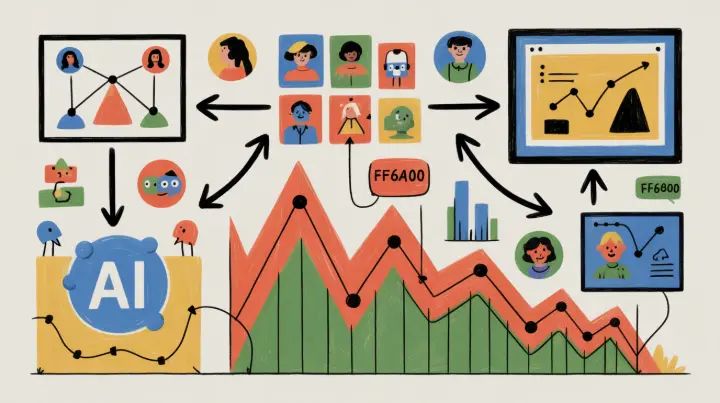In today's fast-paced digital world, Australian companies are turning to AI infrastructure to stay competitive.
This setup, which includes data centers, cloud computing, and specialized hardware, helps firms handle complex tasks more efficiently. For businesses in Australia, where data sovereignty and renewable energy play big roles, investing in the right AI foundation can lead to real savings.
Think about reducing the money spent on winning new customers or streamlining day-to-day operations. It's not just hype; it's a practical approach that's already showing results for local firms.
What Makes AI Infrastructure Essential for Aussie Businesses?
AI infrastructure refers to the backbone that powers artificial intelligence applications, like servers, storage systems, and networks optimized for machine learning.
In Australia, this often means using local data centers in places like Sydney or Melbourne to comply with privacy laws and keep latency low. With the country's push toward clean energy, many setups now run on renewables, which keeps long-term costs down.
Why focus on this now? Recent studies show that Australian organizations are prioritizing efficiency over growth when it comes to AI. About 57 percent of them use it mainly for cost-cutting, while only 25 percent aim for revenue boosts.
This makes sense in a market where productivity has lagged behind global leaders. By building or accessing solid AI infrastructure, companies can automate routine work, freeing up resources for what matters most.
Slashing Customer Acquisition Costs with AI Tools
Customer acquisition cost, or CAC, is the total spend to bring in a new client, from marketing to sales efforts. AI infrastructure changes the game here by making these processes smarter and less expensive.
For starters, AI can personalize marketing campaigns at scale. Imagine analyzing customer data in real time to target ads more precisely, avoiding wasted spend on broad audiences.
In Australia, where digital advertising is booming, this means better returns on platforms like Google or social media tailored to local preferences.
Tools powered by AI infrastructure also handle lead generation automatically. Chatbots and predictive analytics sift through inquiries, qualifying leads without human intervention.
This cuts down on sales team hours and boosts conversion rates. One report notes that AI adoption can modernize industries and lower costs for small businesses, positioning them for high-value growth. For Aussie SMEs, this could mean competing with bigger players without breaking the bank.

Take retail as an example. An online store in Brisbane might use AI to recommend products based on browsing history, reducing the need for costly retargeting ads. The result? Lower CAC and happier customers who feel understood.
Trimming Operational Expenses for Long-Term Savings
Operational expenses, known as OPEX, cover the ongoing costs of running a business, like staff, utilities, and software. AI infrastructure tackles these by automating workflows and optimizing resources.
Efficiency is key. On average, AI initiatives save about 30 percent in time across projects. For instance, in manufacturing or construction, AI predicts maintenance needs, preventing downtime and expensive repairs. In offices, it automates invoicing, emails, and data analysis, letting teams focus on strategy.
Australia's expanding data center capacity is a big plus here. Projections show it growing from 1,350 MW in 2024 to 3,100 MW by 2030, attracting billions in investment and creating jobs.
This means more affordable access to cloud-based AI, especially with renewable energy keeping power bills low.
Ninety percent of small and medium businesses using AI report more efficient operations. Software development sees a 26 percent productivity jump, while tasks like loan verification at banks take half the time.
For a Sydney-based firm, this translates to lower OPEX through reduced stress on staff and fewer errors.
Real Examples of AI Infrastructure in Action Across Australia
Look at companies like Canva, which integrates AI into its design tools to simplify workflows. This not only cuts internal costs but also helps users create content faster, indirectly lowering their own CAC for marketing materials.
In healthcare or finance, AI infrastructure supports predictive models that streamline operations. Commonwealth Bank, for one, halves verification times with AI, trimming OPEX significantly.
Broader impacts are huge. AI could add up to $115 billion to Australia's economy annually by 2030, mostly through productivity gains. For mid-sized companies, catching up on adoption is crucial to avoid falling behind larger firms.

Tips to Get Started with AI Infrastructure in Australia
Ready to dive in? Start small. Assess your current setup and consider cloud providers with Australian regions, like AWS or Azure, for compliance and speed.
Seek grants or incentives the government offers for AI adoption, especially for SMEs. Train your team on basics to maximize returns.
Partner with experts if needed. Even if your business has roots elsewhere, like in Pakistan, global providers can tailor solutions for the Australian market.
In the end, AI infrastructure isn't about fancy tech; it's about making your business leaner and more agile.
By focusing on cost reductions in CAC and OPEX, Australian companies can thrive in a competitive landscape. If you're exploring options, now's the time to act and see those savings add up.